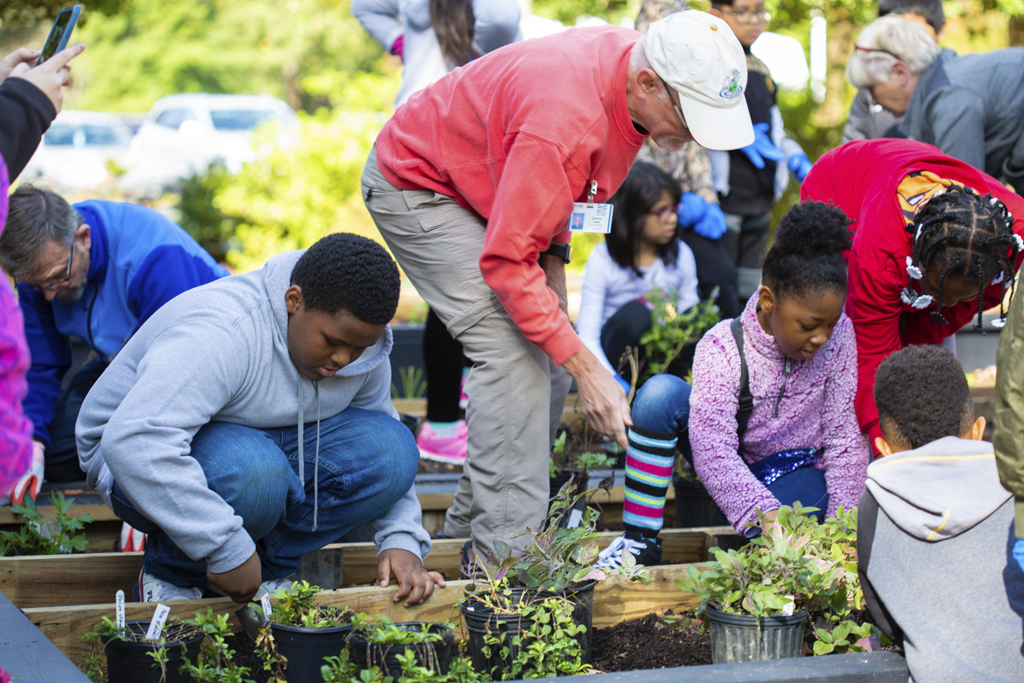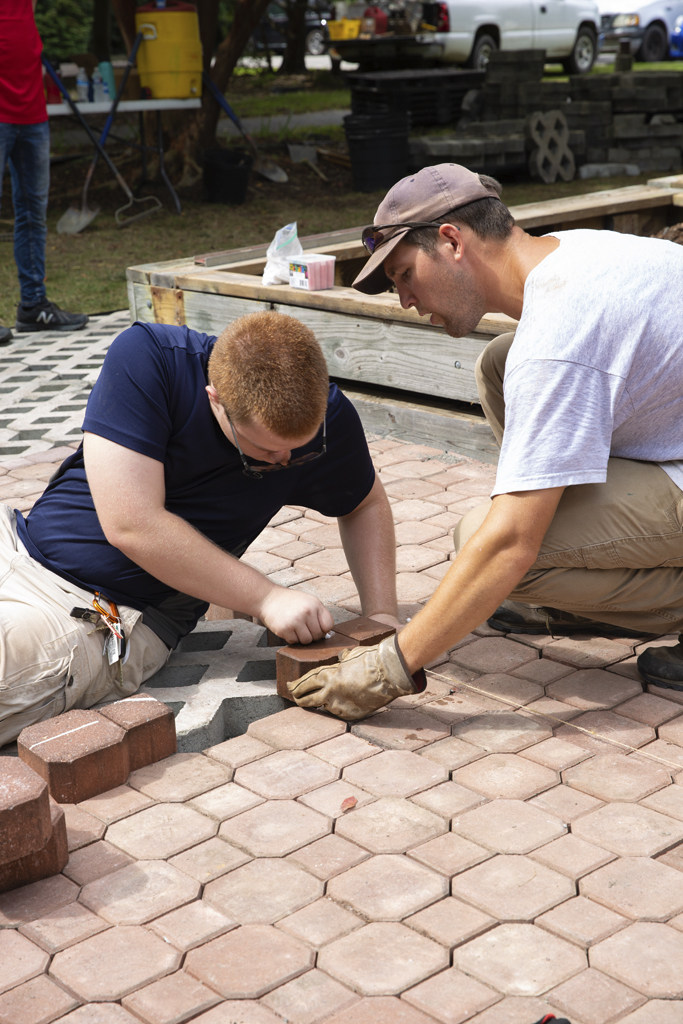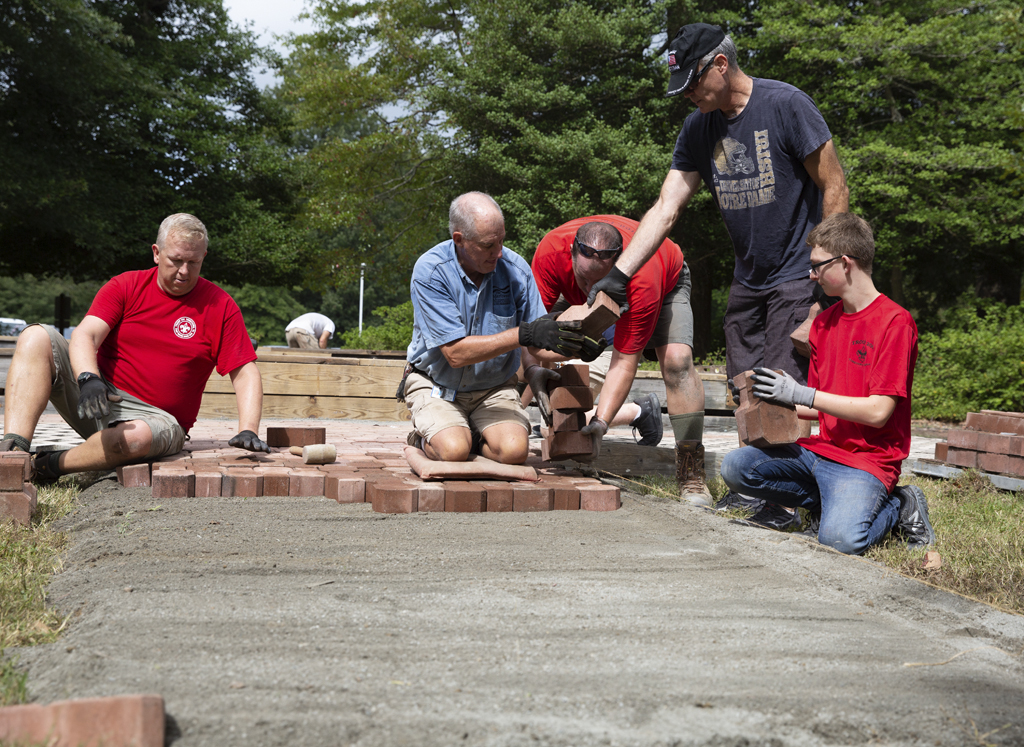
Gardens and our health
It seems these days many communities around the world are passing the time by unearthing and reimagining their lackluster yards, gardens, and other shared green spaces. Whatever your tabula rasa might be, it’s undeniable that gardens offer an approachable avenue to enhance aesthetics and reduce food insecurity in urban centers, and improve human health in numerous ways. Gardening not only connects people with the fertile ground they toil, but also creates links and connections between community members, whether it’s swapping tips, tricks, and plants with neighbors, or being part of a larger network like with the Master Gardeners or Master Naturalists. Even in the Tidewater area, surrounded by brackish water and the threat of hurricanes for six months, luscious gardens are part of our landscape, and we have some beautiful historical gardens in this area to show it! Erica Deale, the Park Stewardship Coordinator, often remarks that The Mariners’ Museum Park is, “one of the most well-planned and well-documented parks that I have ever seen.” The plants, trees, shrubs, and everything in between, were planned out extensively in the 1930s, and many of those plants are still in their original locations!
The Bumblebee Learning Garden
Though the planning of the Park was on a larger scale, at The Mariners’ Museum and Park grounds, we are lucky enough to have lovely smaller gardens and beds sprinkled around the grounds, some newer than others, including a beautiful pollinator garden built in October 2019 that has a strong community connection.
The pollinator garden, now called the Bumblebee Learning Garden, is located near the Business Entrance has many similarities to the garden spaces folks are building now– something from nothing. Previously, this bland, interstitial grassy space between parking lots was an area of grass and not much really drew people to explore that area of the Park grounds.
After a while of back and forth with the student program details, working with the local teachers from L.F. Palmer Elementary, and planning on where the program would take place in the Park, I came out on the other side with the program called Nature Explorers! This sensory learning experience is focused on helping students in the third-grade to help understand the complexities of ecosystems by exploring with their senses and seeing how everything is connected in our world. When we got the point of program approval, and garden approval, it was time for the actual logistics, including the details of the pollinator garden!
Coming together
I mentioned how gardens create community previously in this post, and when I think of coming together, I think of our amazing garden at the Museum– it was truly a community effort! We were lucky to have a community ready and willing to assist us!
A local Eagle Scout, named Logan Jackson, took the garden on as his Eagle Scout candidate project– and spoiler alert– he succeeded! Logan, his volunteers, and the Museum’s staff worked quickly to build the garden for the Fall deadline. They were able to build and source most of the material as donations from local vendors and even upcycle unused items from the Park’s store piles (unused wood from previous outdoor projects, and so on). Dave Kennedy, from The Mariners’ Museum and Park, created the garden design and guided Logan with the help of Dave’s crew, Graham King and Josh Bailey.
The garden consists of three large raised beds, one of which is made to be the height of a wheelchair so the garden could be accessible for everyone. Stones and stone dust maintained on the path around the beds also intended for accessibility.
The compost and soil that went into the garden was also from The Mariner’s Museum and Park grounds in addition to leaf compost from the City of Newport News. Graham, also part of the Peninsula Master Naturalists, was able to help get donated plants from Cindy Ogle at Sassafras Farms. We were fortunate to get lovely native plants, hand-dug by Graham, that are not only excellent plants for pollinators, but we also chose plants that are host plants for butterflies and moths, such as beardtongue, which is a larval host for the Common Buckeye butterfly.
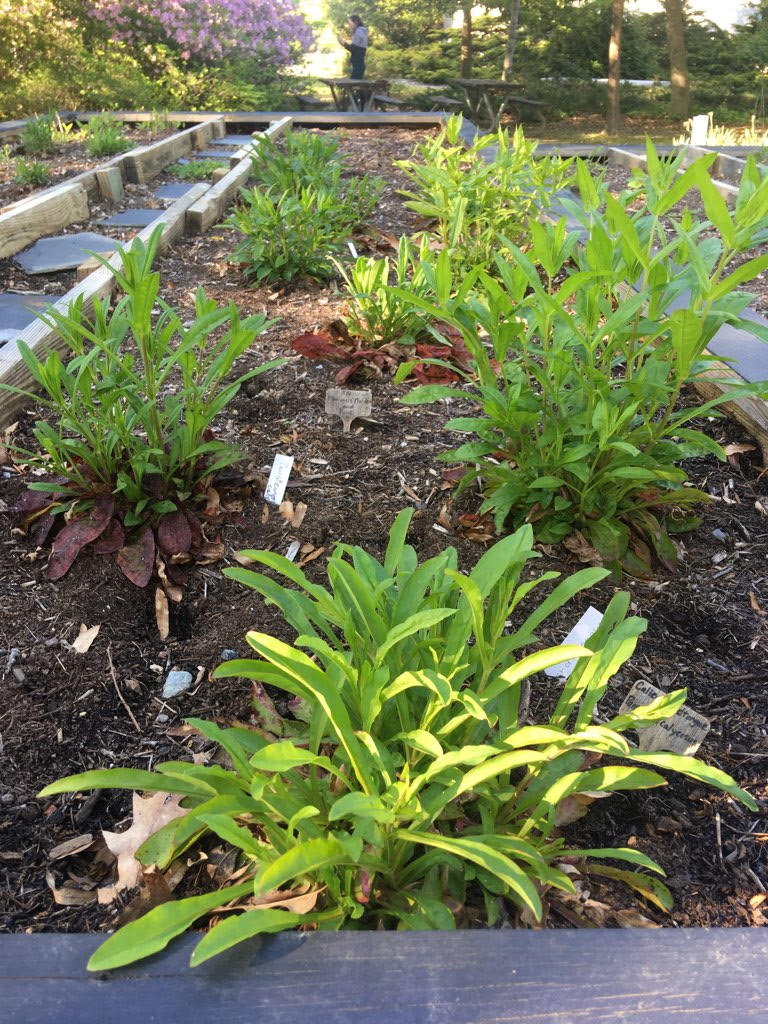

After we got the garden all squared away, the next step was bringing in our pilot group of third-graders from Palmer Elementary to help plant our plants!
Theresa Augustin, Director of Environmental Engagement & Outreach, and her Education team at Norfolk Botanical Garden and Charlotte Boudreau, the current President of the Peninsula Master Naturalist chapter, gave us stellar advice about planting with children.
Charlotte and her team of Master Naturalists were our boots on the ground, or rather, gloves in the soil, when it came to planting with the kids– and they did an excellent job! (The Master Naturalists are also helping us to maintain the garden space– so we are thankful for their help!)
Erica Deale and I took the students through the two other stations before the garden, one using their senses on a scavenger hunt in a forested area of the Noland Trail and the other testing out different bird beaks to help understand what type of foods birds eat (including those tasty pollinators who are eating the pollen from the flowers they were about to plant).
Finally, the last station was a major effort– they kids finally were able to choose a few plants, work with a Master Naturalist (about 3-5 students per adult worked well), and then they got planting. I divided up the garden into four sections to make sure there were enough plants for each class– and believe me, there were plenty of plants to go around for the students to plant.
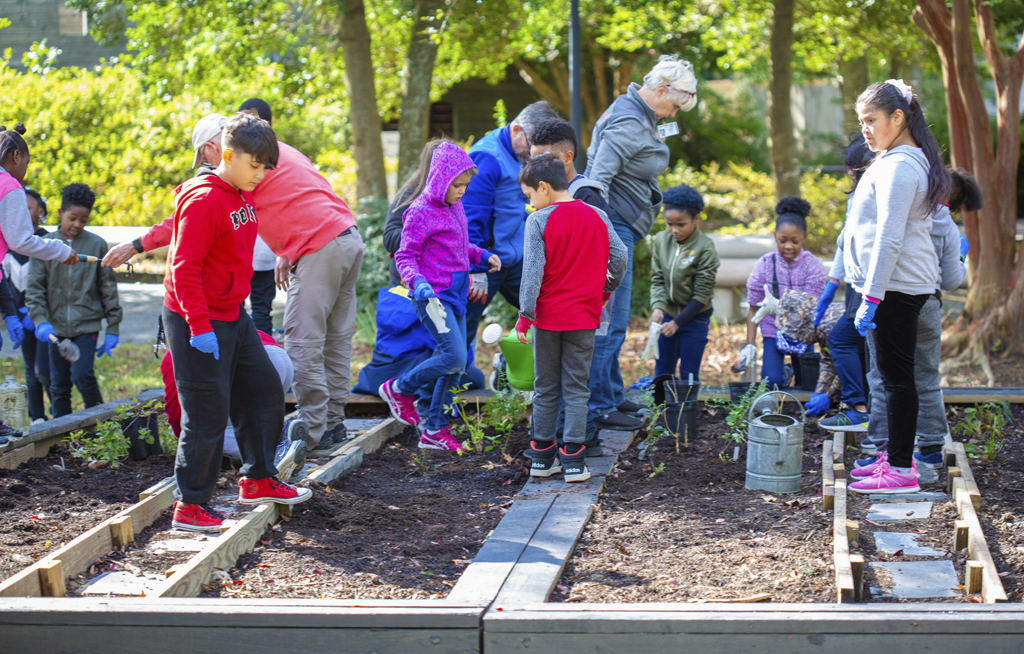
As one might imagine, the kids loved it! For some of the students, they had been gardening before, or even had gardens of their own, but for many more, this was the first time they had really dug into soil. Some students even tried to take away some of the soil, like clumps of clay, because they had likely not experienced clay in that form previously and were fascinated by it. As a geologist, I say– yes! Future sedimentologist? Future conservationist? Please and thank you!
What’s happening in the future?
We are hoping to offer a version of this program in the future, but as most things are right now (due to COVID-19), it’s a little unclear what that might look like at this point. However, I think it’s safe to say, this outdoor sensory experience about ecosystems was a success and will be for the future. The students left with huge smiles on their faces as they made their way to the buses– and my hope is that this positive outdoor experience makes a difference in their lives.
Though the next groups who participate in this program will likely not be planting the garden, they will be observing the plants as they grow and bloom over time. Students will be able to see the magical and magnificent insects parade around the garden, like delicate, yet territorial butterflies, busy, buzzing bees, and crawling beetles.
If you want to learn more about the plants in the Bumblebee Learning Garden, please visit our site: https://www.marinersmuseum.org/bumblebeegarden/
Elsevier. “Urban, home gardens could help curb food insecurity, health problems.” ScienceDaily. www.sciencedaily.com/releases/2019/10/191007180035.htm (accessed May 11, 2020).
Lindemann-Matthies, Petra, and Hendrik Brieger. “Does Urban Gardening Increase Aesthetic Quality of Urban Areas? A Case Study from Germany.” Urban Forestry & Urban Greening. Urban & Fischer, April 1, 2016. https://www.sciencedirect.com/science/article/abs/pii/S161886671530131X.
Soga, Masashi, Kevin J. Gaston, and Yuichi Yamaura. “Gardening Is Beneficial for Health: A Meta-Analysis.” Preventive Medicine Reports. Elsevier, November 14, 2016. https://www.sciencedirect.com/science/article/pii/S2211335516301401.
